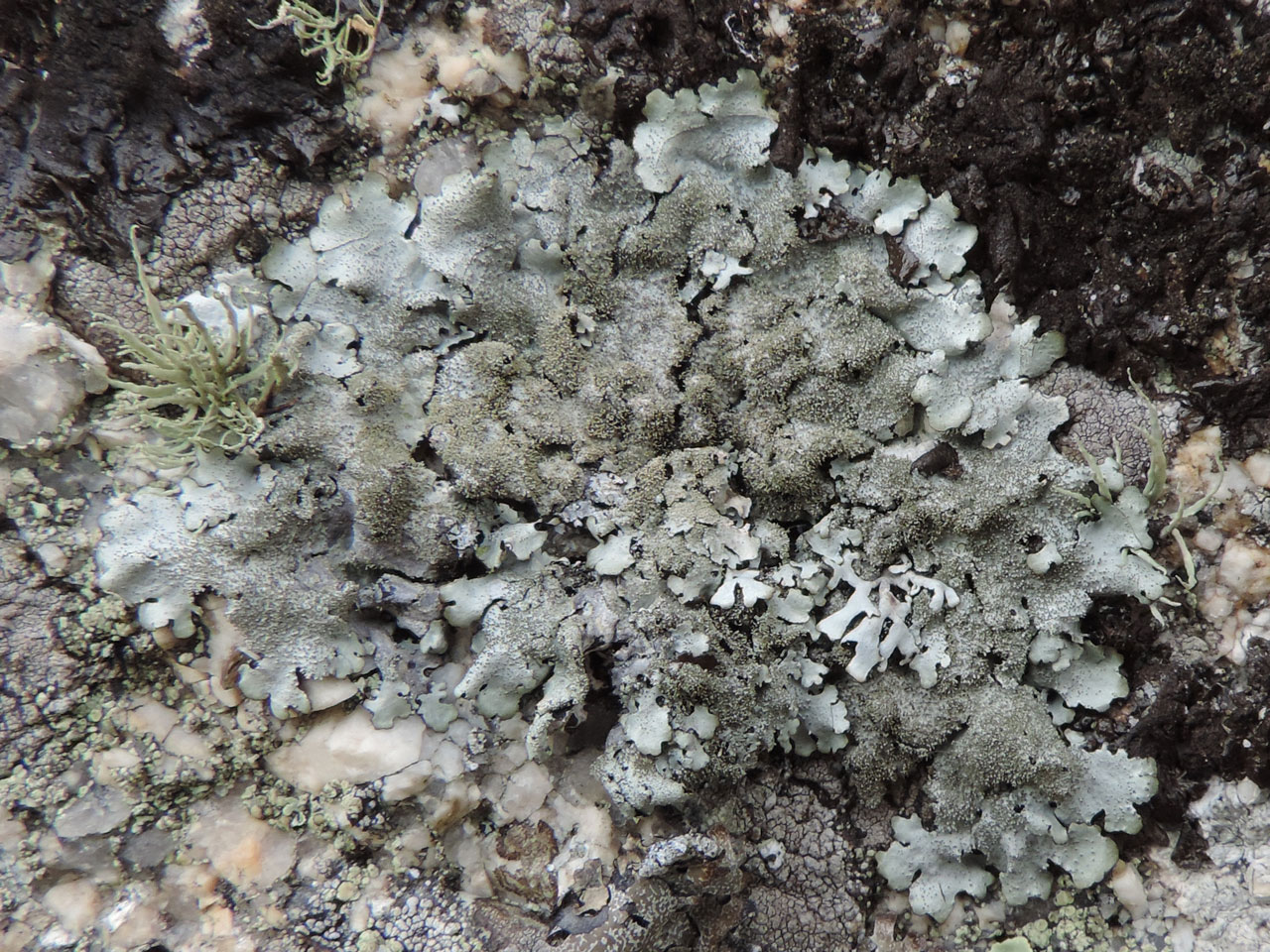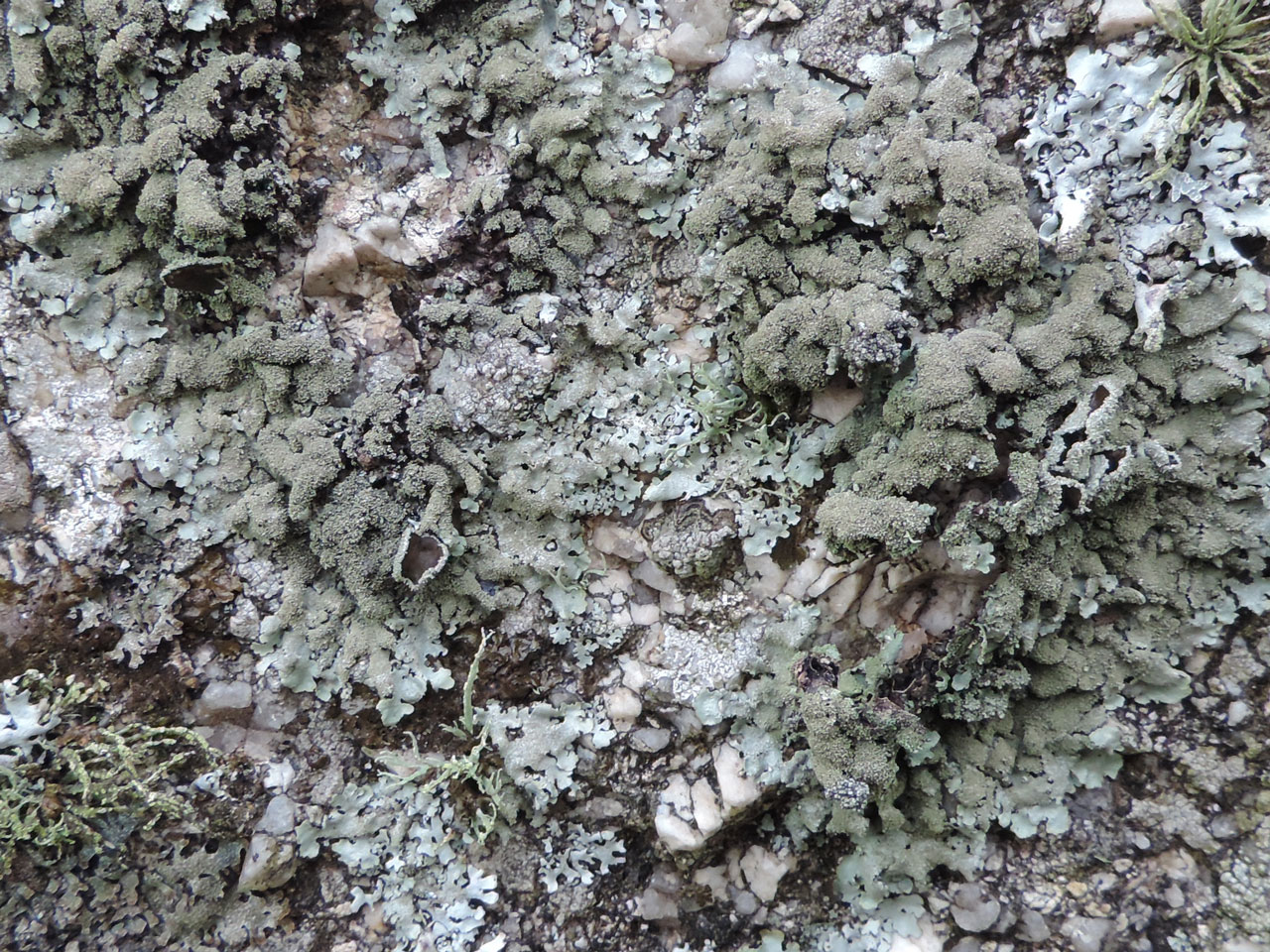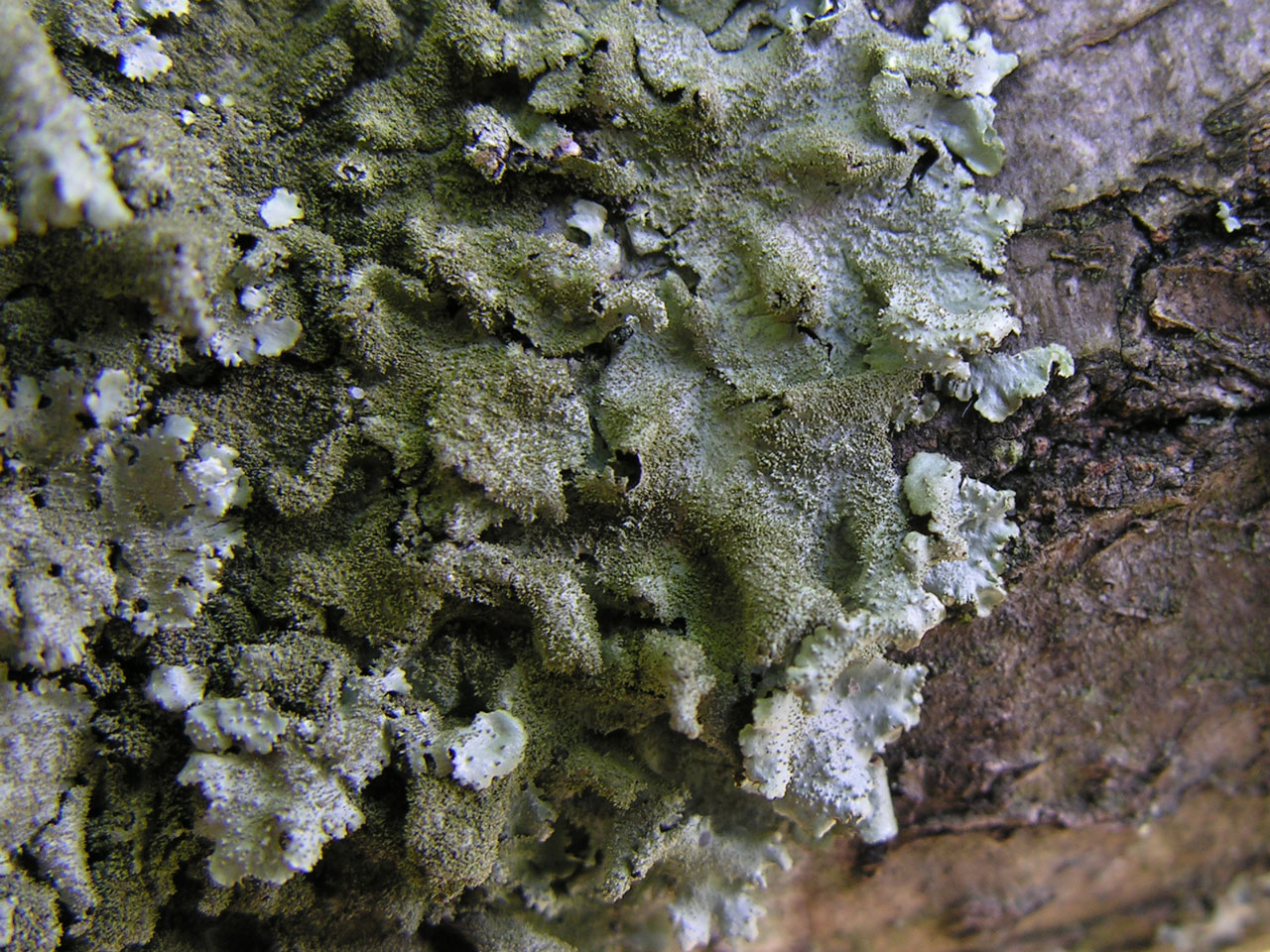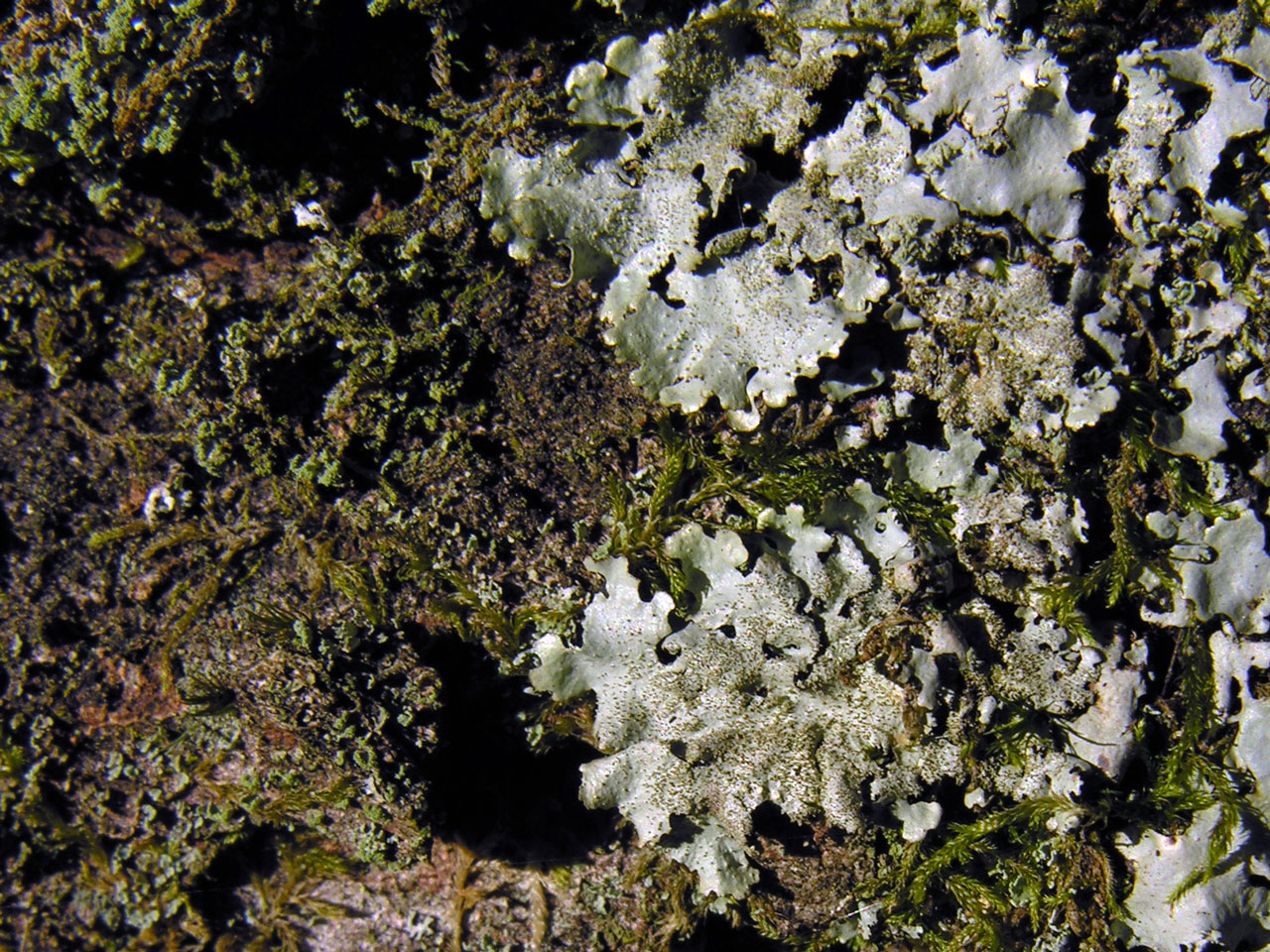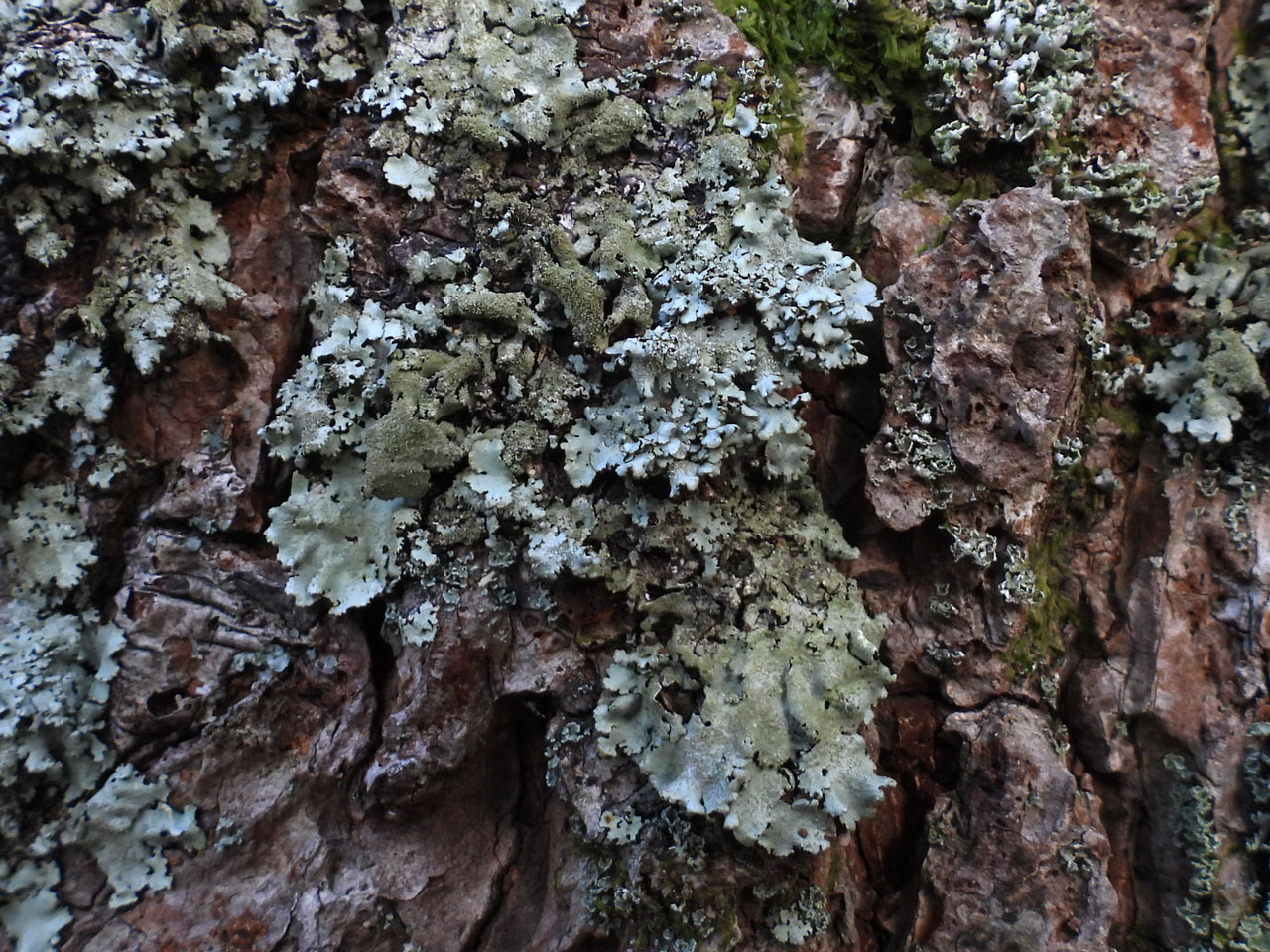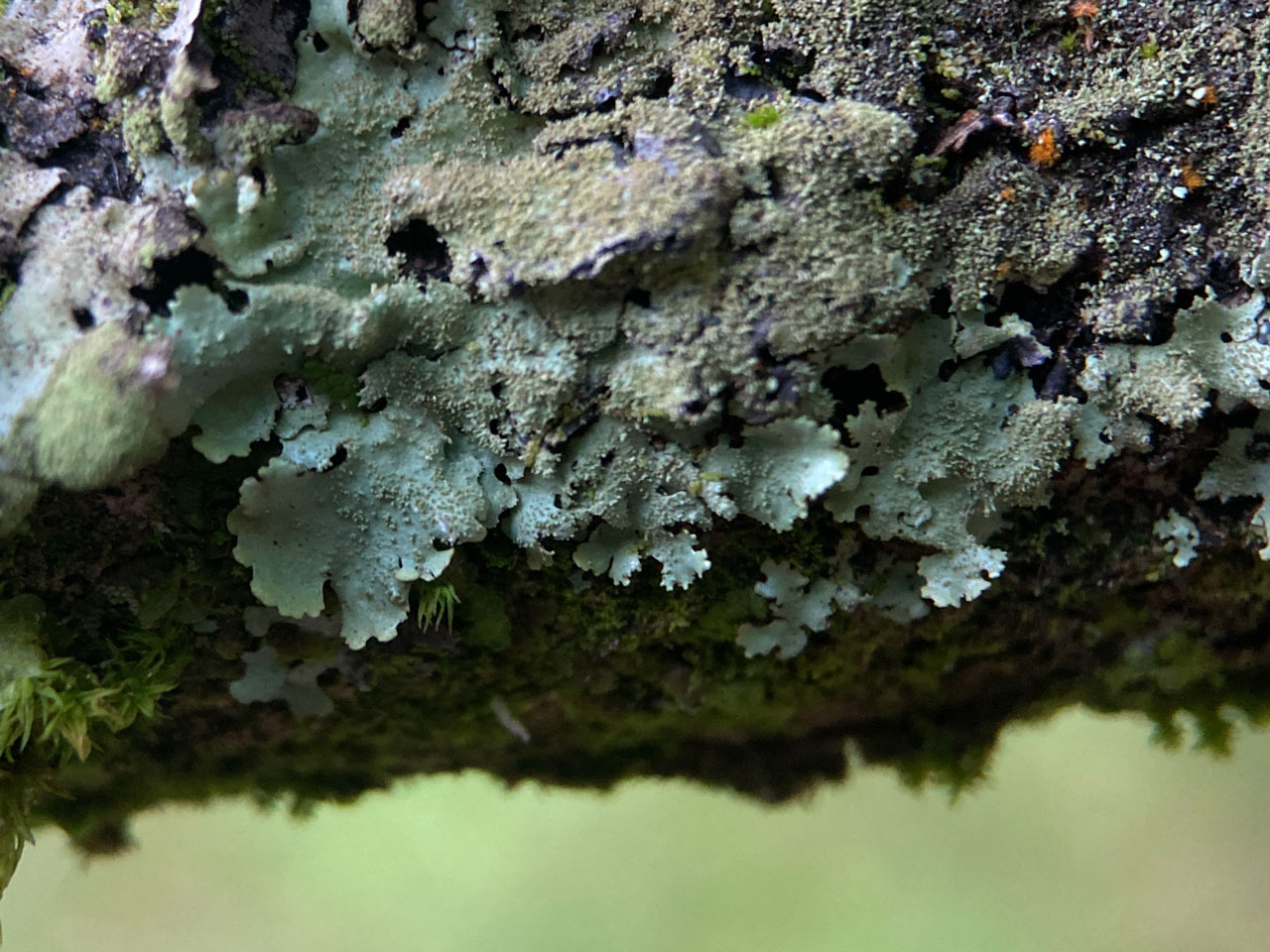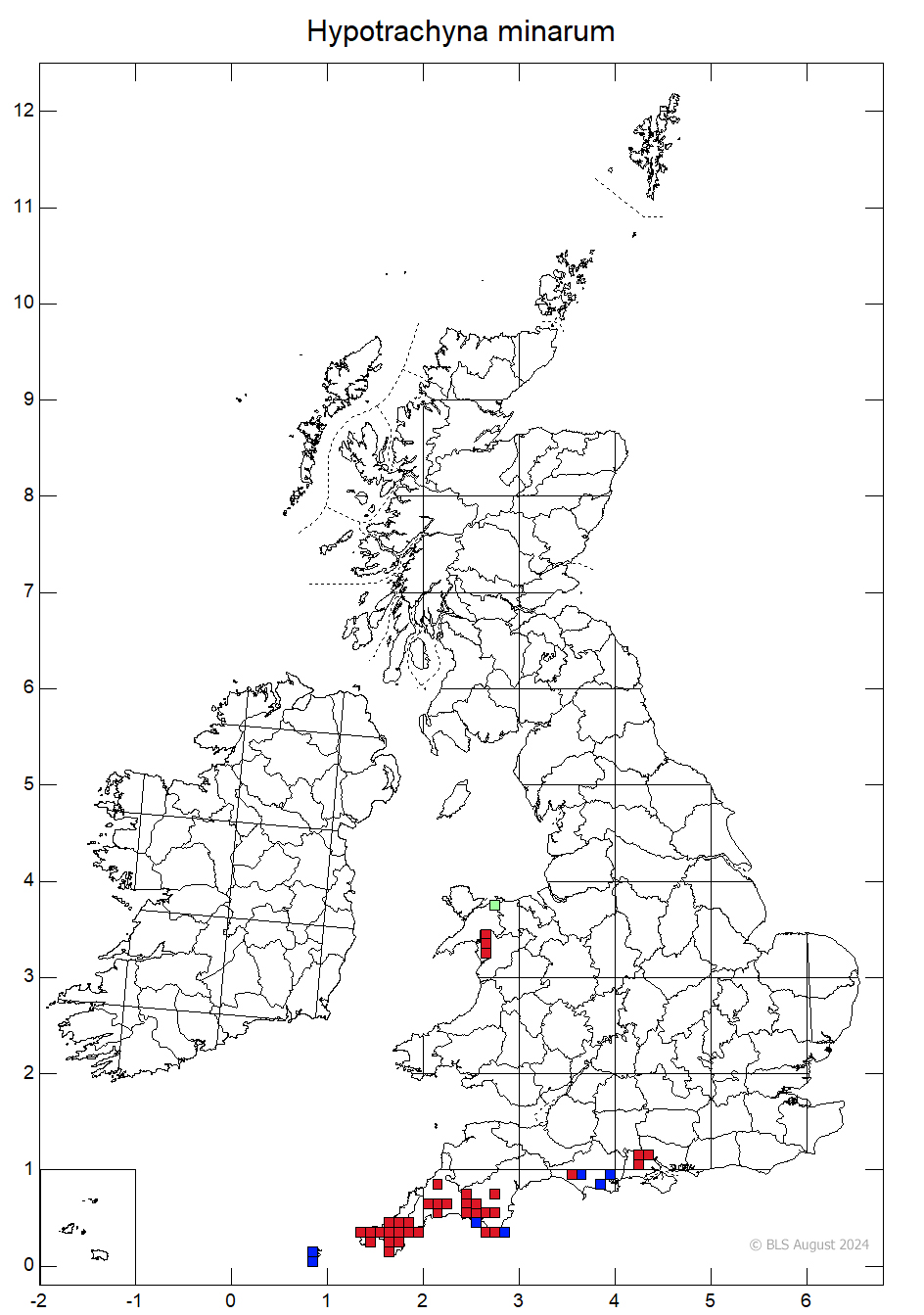Hypotrachyna minarum
A distinctive smaller Hypotrachyna, which when well developed has a distinctive brownish tinge to the thallus, caused by dense, brown tipped coralloid isidia. The medulla is also C+ red . Separated from the similar Hypotrachyna horrescens by this having flattened slivery isidia, with laminal cilia at the base and a C– medulla. A strongly southern species, which is widespread in the tropics, very locally frequent in the south west, east from the New Forest.
Thallus moderately to tightly attached, 2–5 (–7) cm diam., forming small, irregular patches; lobes ± crowded, sublinear, to 1–3 (–5) mm broad with apices more rounded than subtruncate; margins frequently irregularly incised, with abundant, mostly unbranched, ± unevenly dispersed cilia; upper surface grey-white, matt or partly shiny, isidiate; isidia laminal, dense and ± obscuring the thallus, cylindrical and becoming coralloid-branched, brown-tipped when mature. Lower surface black, ± brown towards the apices; rhizines unbranched or rarely forked. Apothecia very rare in British material, 1–4 mm diam. with a dark brown disk and isidiate thalline margin. Ascospores ellipsoidal, 12–17 × 8–10 μm. Pycnidia not seen on British specimens. Cortex K+ yellow; medulla C+ rose-red, K–, KC+ red, Pd–, UV– (atranorin, gyrophoric acid (major) and a complex of medullary substances).
Hypotrachyna horrescens has laminal cilia associated with the isidia, which are flattened when mature, and has a C– medulla. The brown tips of the isidia of H. minarum give mature thalli a distinctive brownish tinge lacking in H. horrescens. Immature thalli before the isidia develop cannot be separated from either H. afrorevoluta or H. revoluta. The species can be surprisingly difficult to distinguish from smaller Parmelina tiliacea thalli, but H. minarum has quite irregular small marginal lobes, while Parmelina tiliacea has larger more regular margins, typical of its genus.
On acid bark on older trees, often Beech, but also found on Oak, Alder, Birch, Sallow , Turkey Oak, Sweet Chestnut and on the trunks of Scots Pine, also Gorse stems, exposed roots and on hard acid rocks.

Rare nationally but very locally frequent. Local along the south coast from the New Forest to Cornwall, most frequent in the far S.W., rare in N. Wales.
Not as rare as first thought when first discovered and occurrences on old Gorse and Sallow scrub in the south west suggest it is locally quite mobile. Has declined in some woods the New Forest, being lost from the lower trunks of Beech as the canopy closes, but is still found higher up in the lower branches and upper trunks here and has colonised isolated Birch trees.
Britain: Notable
Wales: Vulnerable
Cannon, P., Divakar, P., Yahr, R., Aptroot, A., Clerc, P., Coppins, B., Fryday, A., Sanderson, N. & Simkin, J. (2023). Lecanorales: Parmeliaceae, including the genera Alectoria, Allantoparmelia, Arctoparmelia, Brodoa, Bryoria, Cetraria, Cetrariella, Cetrelia, Cornicularia, Evernia, Flavocetraria, Flavoparmelia, Hypogymnia, Hypotrachyna, Imshaugia, Melanelia, Melanelixia, Melanohalea, Menegazzia, Montanelia, Nesolechia, Parmelia, Parmelina, Parmeliopsis, Parmotrema, Platismatia, Pleurosticta, Protoparmelia, Pseudephebe, Pseudevernia, Punctelia, Raesaenenia, Tuckermannopsis, Usnea, Vulpicida and Xanthoparmelia. Revisions of British and Irish Lichens 33: 1-98.
Text by N A Sanderson, based on Cannon et al (2023).
